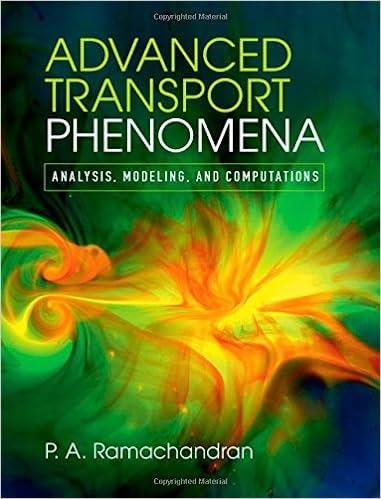Hindered diffusion is a phenomenon of diffusion of a solute in narrow liquid-filled pores when the size
Question:
Hindered diffusion is a phenomenon of diffusion of a solute in narrow liquid-filled pores when the size of the pores is comparable to the size of the diffusing molecule. The hindered diffusion is often modeled by introducing two correction factors, \(F_{1}\) and \(F_{2}\), which are defined as follows:
\[F_{1}(\varphi)=(1-\varphi)^{2}\]
which is simply a geometric factor known as the steric partition constant, and \[F_{2}(\varphi)=1-2.104 \varphi+2.09 \varphi^{3}-0.95 \varphi^{5}\]
which is known as the hydrodynamic hindrance factor. This is known as the Renken equation (Renken, 1954).
Here \(\varphi\) is the ratio of the solute's molecular diameter to the pore diameter. Find the factor by which the diffusivity is reduced for a large enzyme molecule of size \(4 \mathrm{~nm}\) diffusing in a nanoporous liquid-filled membrane of diameter \(30 \mathrm{~nm}\).
Step by Step Answer:

Advanced Transport Phenomena Analysis Modeling And Computations
ISBN: 9780521762618
1st Edition
Authors: P. A. Ramachandran





